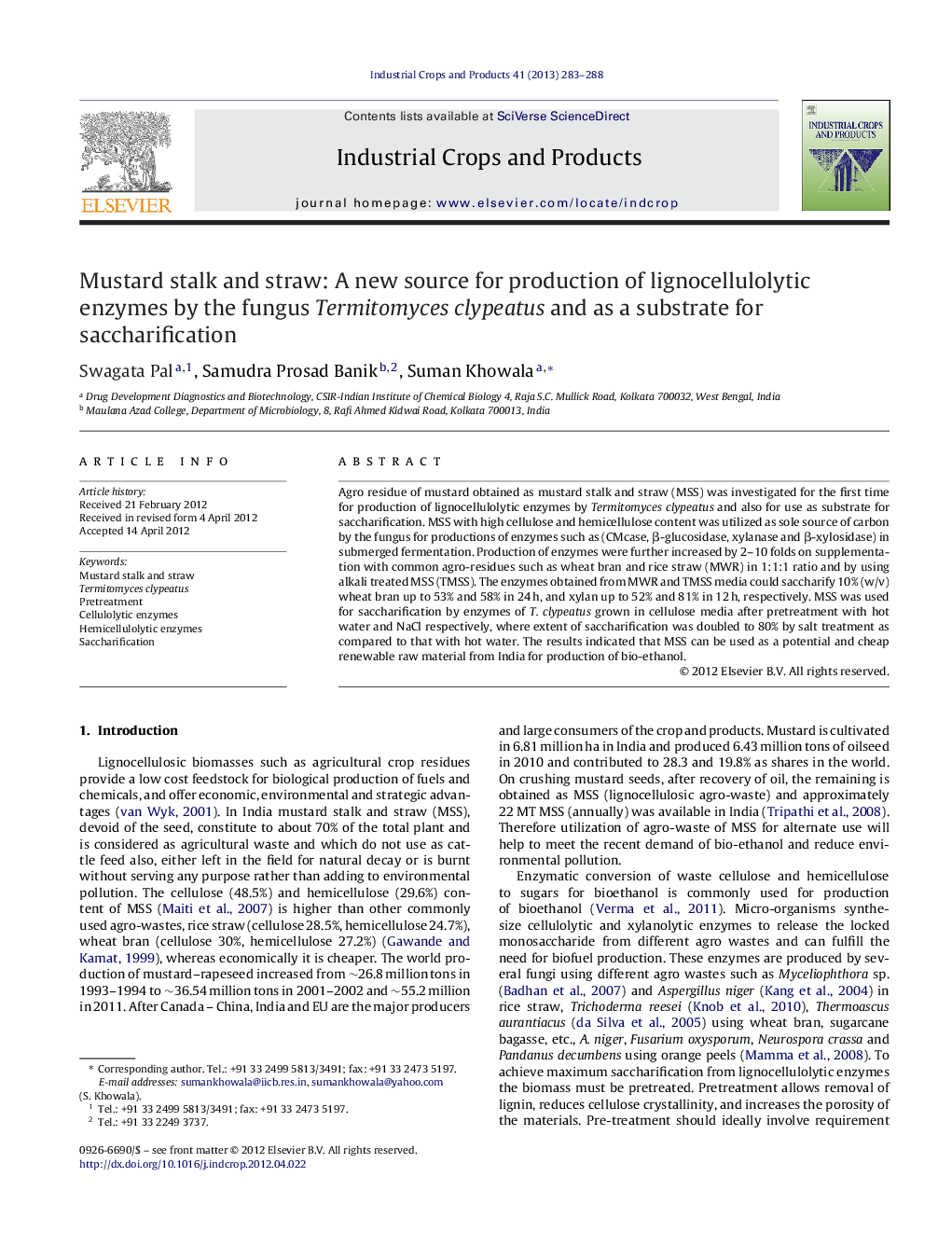| Article ID | Journal | Published Year | Pages | File Type |
|---|---|---|---|---|
| 4513921 | Industrial Crops and Products | 2013 | 6 Pages |
Agro residue of mustard obtained as mustard stalk and straw (MSS) was investigated for the first time for production of lignocellulolytic enzymes by Termitomyces clypeatus and also for use as substrate for saccharification. MSS with high cellulose and hemicellulose content was utilized as sole source of carbon by the fungus for productions of enzymes such as (CMcase, β-glucosidase, xylanase and β-xylosidase) in submerged fermentation. Production of enzymes were further increased by 2–10 folds on supplementation with common agro-residues such as wheat bran and rice straw (MWR) in 1:1:1 ratio and by using alkali treated MSS (TMSS). The enzymes obtained from MWR and TMSS media could saccharify 10% (w/v) wheat bran up to 53% and 58% in 24 h, and xylan up to 52% and 81% in 12 h, respectively. MSS was used for saccharification by enzymes of T. clypeatus grown in cellulose media after pretreatment with hot water and NaCl respectively, where extent of saccharification was doubled to 80% by salt treatment as compared to that with hot water. The results indicated that MSS can be used as a potential and cheap renewable raw material from India for production of bio-ethanol.
Graphical abstractFigure optionsDownload full-size imageDownload as PowerPoint slideHighlights► The study introduces an unutilized but common agro waste of mustard plant as mustard stalk and straw (MSS) of India. ► Alternate use of MSS for production of cellulolytic and xylanolytic enzymes by filamentous fungus Termitomyces clypeatus was studied. ► The study proved that MSS can be a good choice as a cheap agro-residue for production of lignocellulolytic enzymes. ► MSS also served as excellent lignocellulose to be successfully used for saccharification into sugar to generate bioethanol.
